Doug Gilmer writes [via ammoland.com] The quarter bore cartridge family of ammunition is caught in the middle between the popular 6mms, such as the 243 Winchester and the “all the rage today” 6.5mms (26 caliber). Growing up, I read about the 25 calibers in gun magazines where they were described as western calibers. While many trusted the 243 Winchester for deer hunting where I grew up the 25’s were overlooked.
The Quarter Bore Cartridge Family
Today, while not breaking sales records, 25 sales remains steady, their effectiveness on medium game is undisputed, and they remain an excellent option for shooters young and old, big or small, needing power without punishing recoil. While some 25s have faded into obscurity, the following chamberings remain viable for today’s hunters.
250 Savage Cartridge
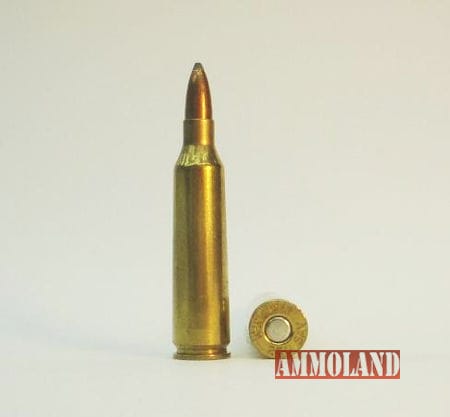
The 250 Savage was first developed in 1915. Also known as the 250-3000 it was the first American commercial cartridge to achieve 3000 feet per second, hence the name. The cartridge did so with a lighter 87 grain bullet.
While a bit scarce, it is still an effective whitetail cartridge and it helped launch the 25 caliber craze in the U.S. Remington loads their 250 Savage with 100 grain bullets at over 2800 fps. If you handload, more potential can be gained with sleeker bullets and modern powders. Some are converting their standard 250s to Ackley Improved versions drawing out more velocity and downrange energy.

257 Roberts Cartridge
The 257 Roberts is a very effective hunting round and is a great choice for new shooters or those who may be recoil sensitive. (Used with permission)”
The 257 Roberts cartridge came along in 1934, beginning life as a necked down 7×57 Mauser. It was the top selling deer and varmint cartridge for over 20 years until the 243 and 6mm came along. The “Bob” out performs the 243 with its heavier 117 and 120 grain bullet but with minimal recoil.
For these reasons, the 257 Roberts is an excellent choice as a starter rifle for young people or small statured shooters. Ammunition is available with Remington, Federal, Hornady and even Nosler loading the 257 with powders and bullets to bring out this round’s full potential. Hornady’s 117 grain Super Performance leaves the barrel at 2945fps and delivers 2253 foot-pounds of energy. It provides about a 100 yard advantage over standard 243 factory loads.25-06 Remington
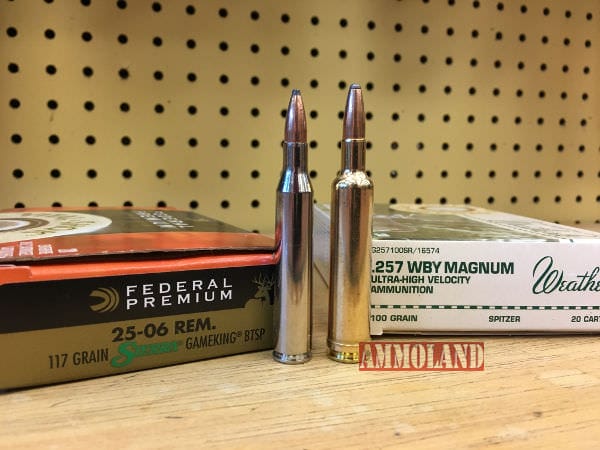
Introduced commercially by Remington in 1969, the 25-06 remignton has been called by some the best antelope and mule deer cartridge ever. It is also popular as a long range coyote and varmint cartridge. As a necked down 30-06, it fits in a standard length rifle action and using the same bullets, out performs the 257 Roberts by about the same margin the Roberts does the 243.
Factory loaded ammunition comes in weights ranging from 90 to 120 grains. From a performance standpoint, Hornady’s 117 grain SST load only drops about six inches at 300 yards with a 200 yard zero, and is still carrying 1500 foot pounds of energy, enough to anchor the biggest whitetail, mule deer, or antelope.
As a matter of fact using a properly constructed, controlled expansion bullet, the 25-06 could be, and has been, used on elk. On multiple occasions I have witnessed the 25-06, shooting 117 and 120 grain bullets, drop moose at ranges out to 200-plus yards. As with anything, bullet selection and shot placement is key.
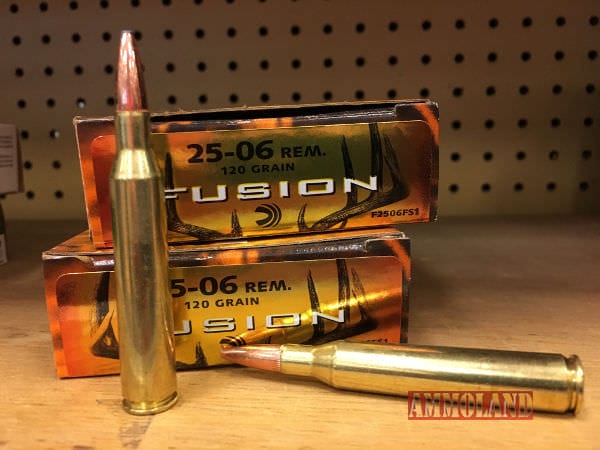

Roy Weatherby left his mark mark on the quarter-bore world in 1944, with the 257 Weatherby Magnum, one of the most popular of all Weatherby cartridges. The 257 Weatherby Magnum was Roy’s favorite and he used it to take all manner of big game, including Cape Buffalo.
As with any game species, bullet selection and shot placement are key. This hot quarter bore does deliver serious ballistic. Its parent case, the 300 H&H, has the capacity to drive 80 grain bullets to velocities nearing the 4000fps mark while the heaviest 120 grain bullets can be launched at over 3300fps and delivering over 2900 foot-pounds of muzzle energy, the same as a 30-06.
All the 257 Weatherby loads shoot flat well out past 300 yards. Performance comes at a price; ammo is more expensive, it burns more powder and coupled with higher velocities, barrel and throat life tend to suffer. Most hunters will never shoot enough ammo in a lifetime to have to worry about this but if you are a volume shooter, it is a consideration.
25.45 Sharps

The new 25.45 Sharps, a 223 blown out to 25 caliber for those who want to hunt deer-sized game with a modern sporting rifle. It duplicates 250 Savage ballistics pushing an 87 grain bullet at about 3000fps, delivering 1739 foot-pounds of energy at the muzzle, 2385fps and about 1100 foot-pounds at 200 yards from a 20” barrel, according to factory charts. Since only the Sharps Rifle Company is making ammunition and rifle components for this new cartridge availability is limited.
The Quarter Bore Cartridges or 25 calibers may be often overlooked and out of vogue in favor of all the new cartridges being developed today. However, for most hunters, there is little need for more power and performance then this ammunition family offers. With their light recoil and track record on game, the Quarter Bore Cartridges are worth serious consideration.
About Doug Gilmer:
Doug Gilmer is a law enforcement and military veteran with over 25 years of experience and assignments operating throughout the United States and around the world in a variety of investigative, protective, tactical and direct action roles. He is an avid outdoorsman who enjoys fly-fishing, hunting with a handgun, backcountry adventures, and volunteering with various outdoor themed wounded warrior events. He has been a frequent contributor to outdoor media for for several years with numerous articles and photos published in a number of media channels. He is a member of the Professional Outdoor Media Association as well as a former board member and executive officer.


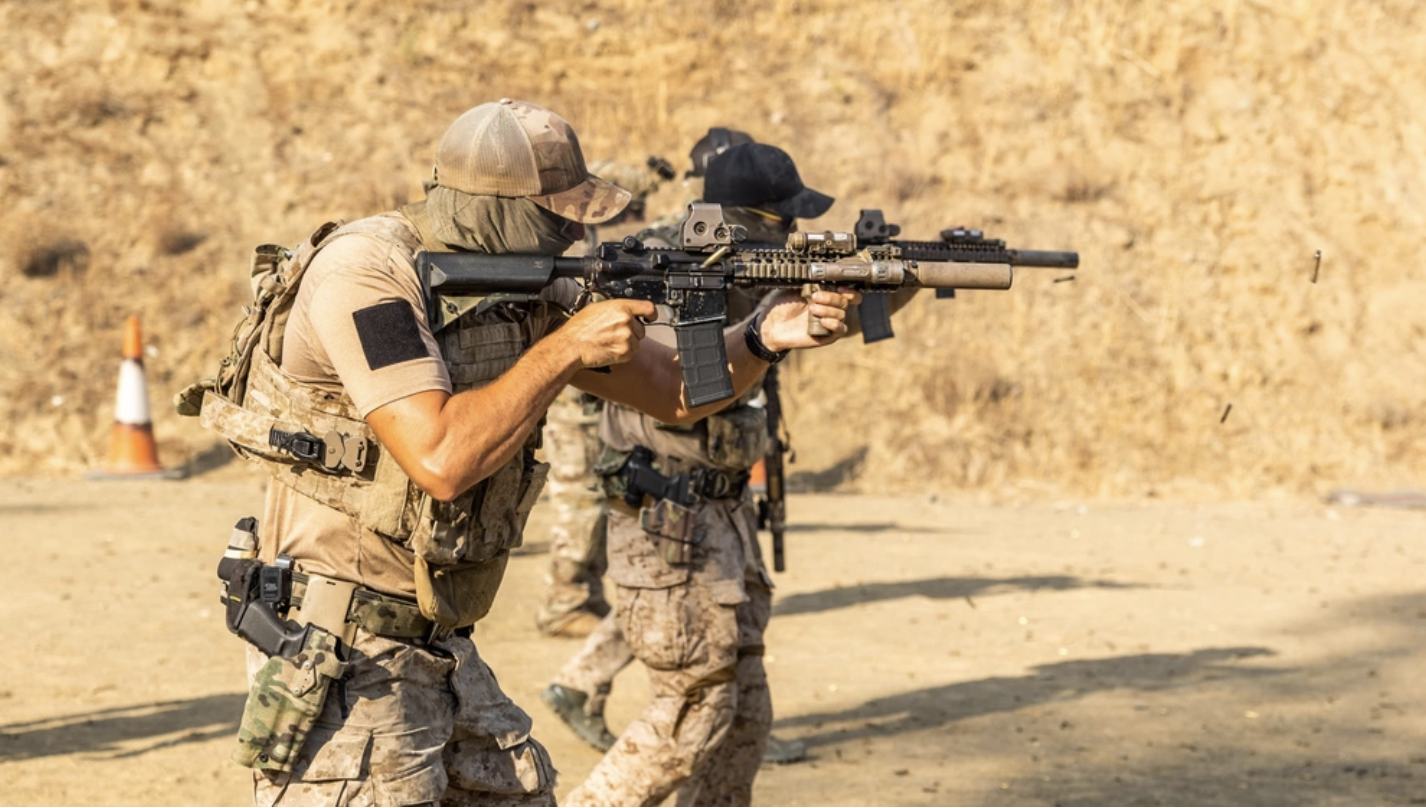
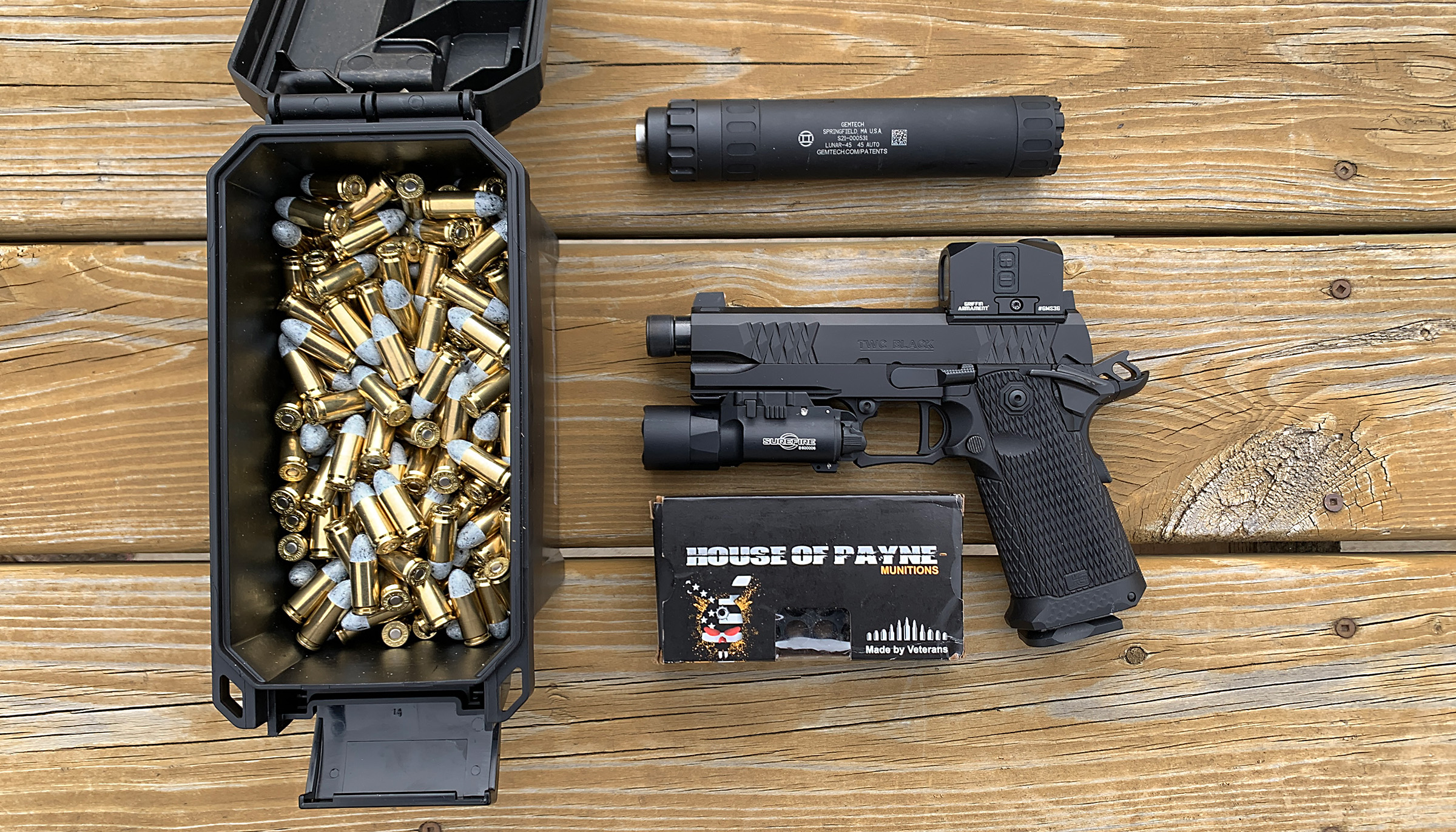
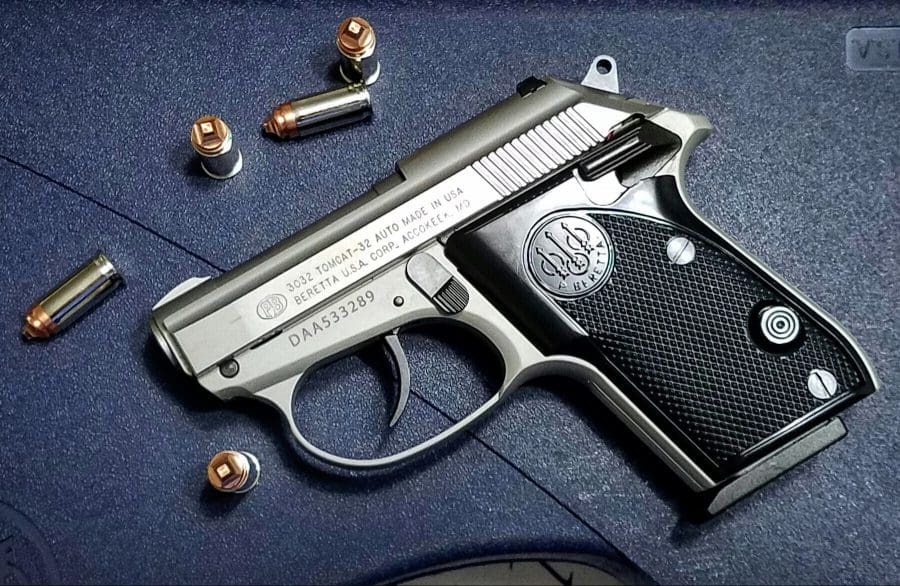



Great article. I learned something I didn’t know. How do the .25 calibers compare to the .270?
As far as I know, .270 Winchester has a leg up on velocity and energy over all of the .250 rounds except for .257 Weatherby Magnum. The venerable .25-06 is extremely close since it shares the same .30-06 parent case*.
* Technically speaking there is an ever-so-slight difference between a .270 Winchester case and a .30-06 case (aside from the neck being sized appropriately) … although they are for all intents and purposes the same.
The .270Win. was based off the .30-03 case not the .30-06. The -06 cartridge was shortened just a bit so that would leave a little more case capacity over a necked down .30-06.
The downside of the extra boost in muzzle energy is that a .270 has about a third more recoil than a .25-06 (http://www.chuckhawks.com/recoil_table.htm)
As much as I hate to say it, the 1/4 bore cartridges are cursed to long term commercial failures in almost all regards. The 25.45 Sharps is doomed to a similar commercial failure I suspect. It looks like brass is proprietary even if you can use a standard bolt. It will wind up as another 6.8 SPC or 6.5 Grendel probably.
That said, it would be cool if you could form the brass from 5.56 like 6X45.
.25-45 is already a failure. It’s only purpose was to skirt Tennessee hunting laws, which prohibited calibers under .24 for deer hunting. Now the law has changed and you can use regular .223 there so .25-45 no longer has a purpose.
The .270 enjoys a wide unexpected of bullet weights from 90 to 180 grains. I prefer 150 grains but also 130grain.
agreed. Best thing to happen to the old ought-6 cartridge
At my age and with the hunting I do the .243 is perfect for me. And the factory ammo is available everywhere.
I’d like to see an AR10 in .257 Roberts. Unlike the the 6.5×55 and the 7×57 it’s COL is just a bit shorter than .308. Might even be able to use the same bolt as the rim dimensions are virtually identical.
The great thing about being a rifle hunter is, there are so many cartridges to choose form.
The bad thing about being a rifle hunter is, there are so many cartridges to choose from.
Any love for the .277 Wolverine here?
Articles like this remind me of how limited my gun knowledge is after all these years of shooting. The sheer number of established calibers I’ve never even heard of is humbling.
I think it would be interesting to do a poll of the TTAG readership to see what caliber of rifle they would pick if it was going to be the only rifle they would ever have in the future, for any and all shooting needs, in both civilized times and in the scenarios conjured by our worst nightmares.
Has a poll like this already been done?
.30-06, followed by .308.
The .30-06 is what I recommend to people who ask effectively the same question you have: if you could have only one rifle cartridge, what would it be?
A .30-06 in a pre64 Winchester Model 70 is “the” one cartridge I’d want, in “the one” rifle I’d want.
It’s hard to make an argument against the .30-06 (or .308) but if there is one it would be that the shooter has to endure more recoil than is probably necessary for most game. Most people can handle that level of recoil just fine but it takes the fun out of long range sessions. For me, after shooting about 25 rounds from my .308 I’m ready to put it down and shoot something else. My .303 on the other hand (which is a slightly lighter rifle/scope package), you wouldn’t even notice the difference in recoil unless you shot them back to back, but 50 rounds with the .303 is no big deal. Same weight bullets, just one puts another 150fps out the barrel.
For that reason if I could only own one I might go with any of the non-magnum 7mm or 6.5mm rounds. Considering how many moose have been taken in Scandinavia with the 6.5×55 Swede it would be hard to argue they’re not capable of taking medium to large game at reasonable ranges.
Thanks for the recommendation on the cartridge. I expect the rifle is probably in the fantasy league for me, if they cost what I expect them to, based on reputation.
.308 Winchester
.308 Win for me.
I saw “quarter-bore” and immediately thought “diameter of a quarter”. Which sounds freakin’ awesome…
Yeah, but you’d probably have to give up 6-8 of those quarters with each shot.
You might get a kick out of this, then. Some guys shooting an even larger 2-bore:
https://www.youtube.com/watch?v=eXoa5zNn0TU
I really don’t have any beef against quarter-bores. I own one – a .250 Savage. It’s plenty accurate, but the first deer I shot with it, I shot four times and it still walked off.
The .25’s will suffer from a lack of modern bullets. Barnes and Berger both make only a couple of choices in the .25’s. There’s more selection in the .270 Winchester, and even the .270’s selections pale in comparison to what’s available in 7mm (0.284″) and .30 caliber.
I’ve hunted with both a 25-06 and 257 Rob. I think the issue with the 257 Rob and the 250 Sav is the current bullet selection of on the shelf ammo. This as been years ago, but I start out with the Rob and a few boxes of old 87 gr ammo. No issues. Accurate and it was putting them down (Deer and Hogs). When I ran out, I pickup some Speer 87 gr ammo and handloaded. I got the accuracy but I had the same experience with two deer (and one was a lung shot). Bullets were separating from the jackets. Later I hunted a few times with a borrows 25-06. This was more recent so I remember using Hornday’s 117 Interlocks. I took a deer with should shot. Bullet mushroomed nicely. Deer went down. Most all 257 ammo is loaded with 100 gr an up now a days. So I think new shooter are good to go. I have a buddy that just bought a 257 Wby Mag. He’s loaded a barn burner 87 gr load. I think he’s going to have problems. Bu, we’ll see.
I would agree that any full power cartridge from the .25 to the .35 will do the job provided you have the right bullet and good placement.
From having hunted with people who loved the .243 Winchester, my response is “Just say NO!” In searching for accuracy, shooters will use varmint bullets with have almost no penetration on pigs. From various gunsmiths I’ve known over the years, every one has said they’ve seen more blown up .243s than all other calibers combined.
My experience has been with the 6.5×55, 303 British, .308 Winchester, 7.62×39, and 8mm Mauser, and I found all of them dropped game quickly and efficiently. 6.5×55 139g SP PMC factory ammunition was very effective. As was my 8mm Mauser using Turkish ammunition with the 154g FMJ replaced with a 170g Hornady RNSP and the powder charge dropped to 44.5 grains. Chronographing at 2720 fps with a 2″ group at 100 metres, it was more than good enough in the field.
Most early .250 Savage rifles have slow 1 rotation in 14 inch twists which fail to fully stabilize 100 grain spitzer and longer bullets. The last run of Savage 99 rifles had 1:10 twists which stabilize 120 grain spitzer bullets, but few were made. This limits most .250’s utility on deer sized game. Probably the reason this fine cartridge lost popularity to .243 Winchester in the 1960’s.